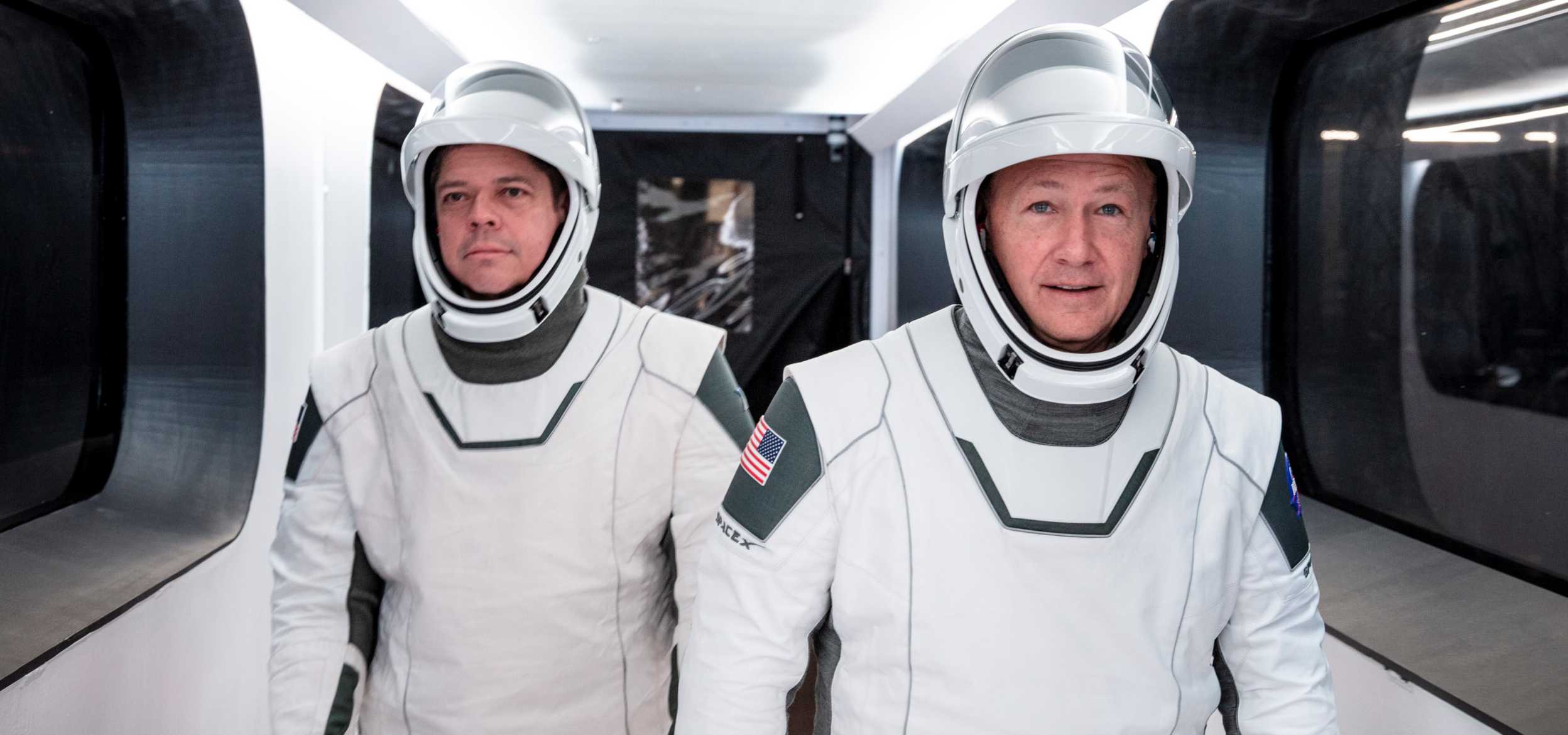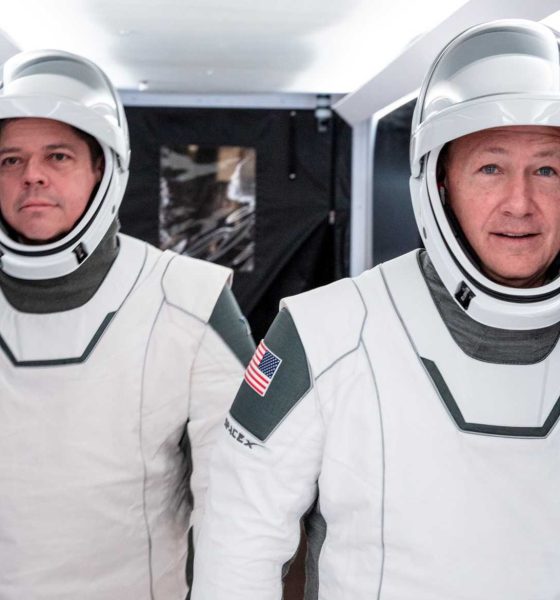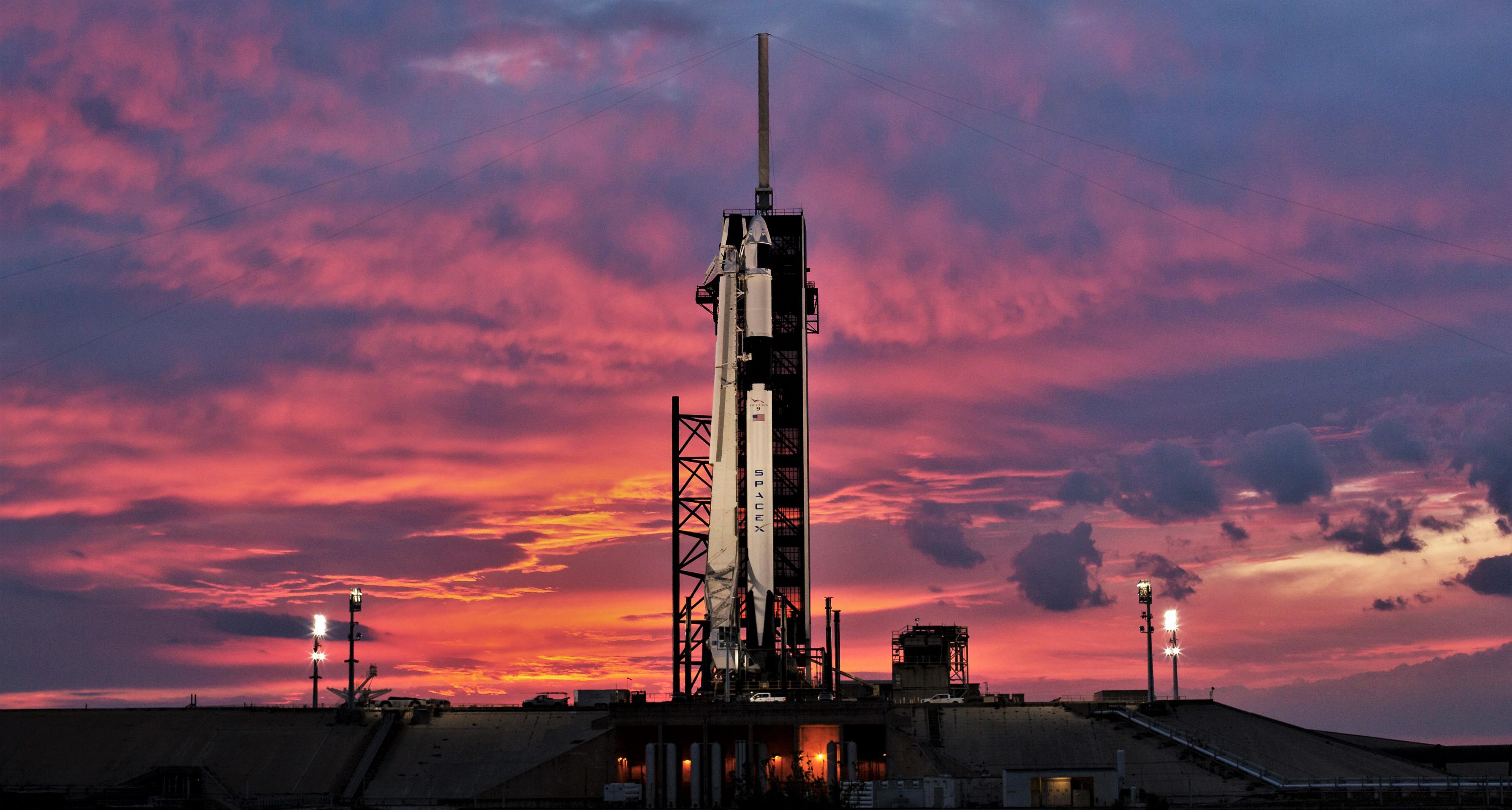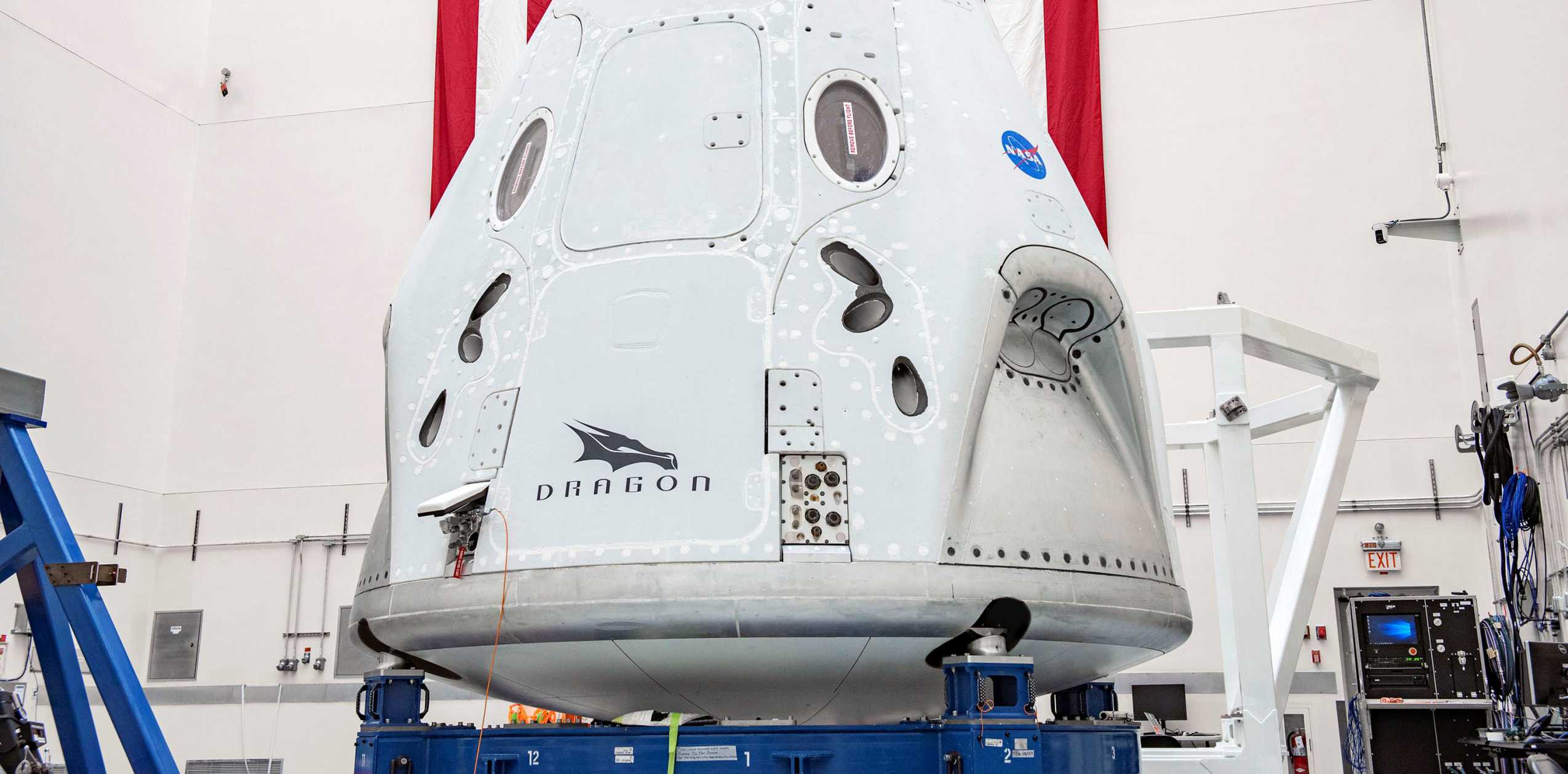

News
SpaceX’s Crew Dragon astronaut mission officially extended by NASA
With less than a month to go before NASA’s first crewed launch in nearly a decade, the space agency is still mulling over the details. On May 27, Bob Behnken and Doug Hurley will strap into their Crew Dragon spacecraft and blast off towards the International Space Station. During their stay, the duo will assist fellow NASA astronaut, Chris Cassidy, in maintaining the station as well as conducting several research experiments.
But how long the duo will remain on the station is still up in the air. NASA held a series of briefings on Friday, May 1, detailing the historic mission and how it would work. Hurley and Behnken will launch from Pad 39A at Kennedy Space Center at 4:32 p.m. EDT (20:32 UTC), and dock with the space station 24 hours later.
The exact length of that mission will be determined during their time in space. “It is a trade-off,” Kirk Shireman, NASA ISS program manager said during the news briefing, “between getting the spacecraft back quickly to complete its certification and providing additional crew time on the station for maintenance and research.”

The Demo-2 mission is a test flight. NASA and SpaceX will be using the mission to certify the Crew Dragon spacecraft for regular use to and from the station. So during this flight, the crew will try their hands at manual control and will test and monitor on boars systems during the significant phases of flight: launch, on orbit, and during re-entry.
Once the vehicle has completed its objectives successfully, it will be certified for a crewed flight. Currently, SpaceX is nearing completion on the next Dragon spacecraft, which will ferry four astronauts to the station for a long-duration mission. During the news briefings, SpaceX COO Gwynne Shotwell announced that the spacecraft for that mission is nearing completion and should arrive in Florida in the next couple of months.
Shireman said that the length of the Demo-2 mission was directly tied to that vehicle’s progress. “What we would like to do, from a station perspective, is to keep them on orbit as long as we can until that Crew-1 vehicle is just about ready to go, bring Demo-2 home, allow that certification work to be completed and launch Crew-1,” he said.

Steve Stich, NASA’s deputy manager of the commercial crew program, said that at minimum, the DM-2 crew would stay on orbit about a month. Their maximum stay would be no more than 119 days, due to the potential degradation of the Dragon spacecraft’s solar panels.
Solar panels are how spacecraft get their power while on orbit, and the sensitive components within the hardware degrade over time thanks to the harshness of the space environment. While it’s on orbit, ground control teams will “wake up” the spacecraft once a week to perform health checks and test the solar array’s performance.
“We would like to fly a mission that is as long as we need to for a test flight, but also support some of the space station program needs,” Stitch said.
Originally, Behnken and Hurley were expected to have a much shorter time on orbit. However, NASA officials said they started to explore the possibility of extending their mission six months ago to ensure there were enough astronauts onboard the space station to keep the orbital outpost in top shape. This year the agency is celebrating 20 years of continuous human presence on the space station, and NASA would like to ensure its continuation into the future.

To that end, Behnken and Hurley have spent significant time training to refresh themselves on station systems as well as prepare the potential spacewalks. A new shipment of batteries is scheduled to arrive on station a few days before Behnken and Hurley, and it’s possible that Behnken could be asked to conduct a spacewalk, along with Chris Cassidy.
The top priority for Behnken and Hurley will be to thoroughly check out the Crew Dragon’s systems, followed closely by relieving Chris Cassidy. “There’s a lot of work and activity that can be done in the U.S. segment; certainly more than one person can accomplish on their own,” Behnken explained during a later briefing.

News
Tesla China quietly posts Robotaxi-related job listing
Tesla China is currently seeking a Low Voltage Electrical Engineer to work on circuit board design for the company’s autonomous vehicles.

Tesla has posted a new job listing in Shanghai explicitly tied to its Robotaxi program, fueling speculation that the company is preparing to launch its dedicated autonomous ride-hailing service in China.
As noted in the listing, Tesla China is currently seeking a Low Voltage Electrical Engineer to work on circuit board design for the company’s autonomous vehicles.
Robotaxi-specific role
The listing, which was shared on social media platform X by industry watcher @tslaming, suggested that Tesla China is looking to fill the role urgently. The job listing itself specifically mentions that the person hired for the role will be working on the Low Voltage Hardware team, which would design the circuit boards that would serve as the nervous system of the Robotaxi.
Key tasks for the role, as indicated in the job listing, include collaboration with PCB layout, firmware, mechanical, program management, and validation teams, among other responsibilities. The role is based in Shanghai.
China Robotaxi launch
China represents a massive potential market for robotaxis, with its dense urban centers and supportive policies in select cities. Tesla has limited permission to roll out FSD in the country, though despite this, its vehicles have been hailed as among the best in the market when it comes to autonomous features. So far, at least, it appears that China supports Tesla’s FSD and Robotaxi rollout.
This was hinted at in November, when Tesla brought the Cybercab to the 8th China International Import Expo (CIIE) in Shanghai, marking the first time that the autonomous two-seater was brought to the Asia-Pacific region. The vehicle, despite not having a release date in China, received a significant amount of interest among the event’s attendees.
Elon Musk
Elon Musk and Tesla AI Director share insights after empty driver seat Robotaxi rides
The executives’ unoccupied tests hint at the rapid progress of Tesla’s unsupervised Robotaxi efforts.

Tesla CEO Elon Musk and AI Director Ashok Elluswamy celebrated Christmas Eve by sharing personal experiences with Robotaxi vehicles that had no safety monitor or occupant in the driver’s seat. Musk described the system’s “perfect driving” around Austin, while Elluswamy posted video from the back seat, calling it “an amazing experience.”
The executives’ unoccupied tests hint at the rapid progress of Tesla’s unsupervised Robotaxi efforts.
Elon and Ashok’s firsthand Robotaxi insights
Prior to Musk and the Tesla AI Director’s posts, sightings of unmanned Teslas navigating public roads were widely shared on social media. One such vehicle was spotted in Austin, Texas, which Elon Musk acknowleged by stating that “Testing is underway with no occupants in the car.”
Based on his Christmas Eve post, Musk seemed to have tested an unmanned Tesla himself. “A Tesla with no safety monitor in the car and me sitting in the passenger seat took me all around Austin on Sunday with perfect driving,” Musk wrote in his post.
Elluswamy responded with a 2-minute video showing himself in the rear of an unmanned Tesla. The video featured the vehicle’s empty front seats, as well as its smooth handling through real-world traffic. He captioned his video with the words, “It’s an amazing experience!”
Towards Unsupervised operations
During an xAI Hackathon earlier this month, Elon Musk mentioned that Tesla owed be removing Safety Monitors from its Robotaxis in Austin in just three weeks. “Unsupervised is pretty much solved at this point. So there will be Tesla Robotaxis operating in Austin with no one in them. Not even anyone in the passenger seat in about three weeks,” he said. Musk echoed similar estimates at the 2025 Annual Shareholder Meeting and the Q3 2025 earnings call.
Considering the insights that were posted Musk and Elluswamy, it does appear that Tesla is working hard towards operating its Robotaxis with no safety monitors. This is quite impressive considering that the service was launched just earlier this year.
Elon Musk
Starlink passes 9 million active customers just weeks after hitting 8 million
The milestone highlights the accelerating growth of Starlink, which has now been adding over 20,000 new users per day.

SpaceX’s Starlink satellite internet service has continued its rapid global expansion, surpassing 9 million active customers just weeks after crossing the 8 million mark.
The milestone highlights the accelerating growth of Starlink, which has now been adding over 20,000 new users per day.
9 million customers
In a post on X, SpaceX stated that Starlink now serves over 9 million active users across 155 countries, territories, and markets. The company reached 8 million customers in early November, meaning it added roughly 1 million subscribers in under seven weeks, or about 21,275 new users on average per day.
“Starlink is connecting more than 9M active customers with high-speed internet across 155 countries, territories, and many other markets,” Starlink wrote in a post on its official X account. SpaceX President Gwynne Shotwell also celebrated the milestone on X. “A huge thank you to all of our customers and congrats to the Starlink team for such an incredible product,” she wrote.
That growth rate reflects both rising demand for broadband in underserved regions and Starlink’s expanding satellite constellation, which now includes more than 9,000 low-Earth-orbit satellites designed to deliver high-speed, low-latency internet worldwide.
Starlink’s momentum
Starlink’s momentum has been building up. SpaceX reported 4.6 million Starlink customers in December 2024, followed by 7 million by August 2025, and 8 million customers in November. Independent data also suggests Starlink usage is rising sharply, with Cloudflare reporting that global web traffic from Starlink users more than doubled in 2025, as noted in an Insider report.
Starlink’s momentum is increasingly tied to SpaceX’s broader financial outlook. Elon Musk has said the satellite network is “by far” the company’s largest revenue driver, and reports suggest SpaceX may be positioning itself for an initial public offering as soon as next year, with valuations estimated as high as $1.5 trillion. Musk has also suggested in the past that Starlink could have its own IPO in the future.








